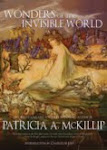Tunnel Mountain is located near Banff in Banff National Park, Alberta.
Today's hike has an elevation gain of 300 metres. It has been many years since I've been on this trail, but the only change from my youth is the fire tower has been removed.
4.3 km (2.7 miles) round-trip 2 – 3 hours

[1 - Tunnel Mountain taken from Sulphur Mountain - click to enlarge]
In 1858,
James Hector named this small peak: The Hill. In 1882,
Major Rogers planned to construct a tunnel through this mountain for the railway line, not realizing he could easily avoid the problem of the cliffs above the Bow River by following the Cascade River and going north of The Hill. When CPR General Manager
William Van Horne saw Rogers' plans he was furious. "Are we going to hold up this railway for a year and a half while they build their damned tunnel? Take it out!" So the tunnel was never built, but the mountain name commemorates Rogers' intended folly.*
The St. Julien Road trailhead can be reached by turning east off Banff Avenue via Moose or Wolf Street. Shortly after passing the angled junction to Grizzly Street turn left (uphill) to the parking lot with the trail sign (just north of the Banff Centre).

[2- Tunnel mountain trail]
At 0.4km the trail crosses the Tunnel Mountain Road
Above the road there are a series of long switchbacks that provide a gradual ascent through a forest of lodgepole pines and Douglas firs.

[3 - south-west view looking over Banff townsite and Sulphur Mountain]
There will be occasional glimpses of the Town of Banff and Bow Valley.

[4- wildflower - click to enlarge]

[5- Deer encounter on trail - click to enlarge]

[6- Encounter on the trail - click to enlarge]

[7- Younger buck on trail - click to enlarge]

[8- click to enlarge]

[9]

[10-Juniper berries - click to enlarge]

[11-view west Bow River Valley - click to enlarge]

[12 - click to enlarge]

[13 - Trail - click to enlarge]

[14 - Banff townsite and Bow River - click to enlarge]

[15 - south-west view of Banff and Sulphur Mountain, line across is road to Upper Hot Springs and the Gondola Cable Car Station - click to enlarge]

[16 - Tunnel Mountain Trail - click to enlarge]

[17- View west over Bow River Valley and Sulphur Mountain on left- click to enlarge]

[18- View north-east over Bow River Valley - click to enlarge]

[19- View south in Spray River valley from trail, Suphur Mountain on right - click to enlarge]

[20-Crocus on trail - click to enlarge]

[21- wildflower on Tunnel Mountain Trail -click to enlarge]

[22- View west of Banff townsite, Bow River Valley and Vermilion Lakes- click to enlarge]

[23- View south-east toward Mt. Rundle and Banff Springs Hotel Golf Course - click to enlarge]
The (Fairmont) Banff Springs Hotel has a
27-hole championship golf course.

[24-View east of Bow River Valley - click to enlarge]

[25]

[26-view north-east]

[27-View east of Bow River Valley, Mt. Rundle and Banff Springs Hotel Golf Course - click to enlarge]

[28]

[29- Near summit of Tunnel Mountain - click to enlarge]

[30- View west over Banff townsite, Bow River Valley and the Vermilion Lakes - click to enlarge]
There are limestone slabs near the summit.
On the summit ridge, the trail doubles back and runs above Tunnel Mountain’s east facing cliffs.
Trail ends at 1,690 m at the site where there had been a fire lookout tower once named ‘King’s Lookout’ after King George VI and Queen Elizabeth hiked there in 1939.
Stoney Indian Noah Cecil said his grandfather helped carry a dying tribesman atop Tunnel Mountain, and erect a teepee for his departing spirit, commenting, "A man's a long time dead. On mountain he see more." (Harriet Hartley Thomas, From
Barnacle to Banff)

[31-Summit of Tunnel Mountain]
Sources:
ParksCanada*http://rmbooks.com/books/tunnel.htm
Photo Credits: [1][21]-ocad123 CC-nc-nd-flickr, [2][3][5][6][7][8][9][10][11][12][13][14][15][17][18][19][22][23][24][25][26][27][28]-diluvienne CC=nc-flickr, [4]-ronsipherd CC-nc-nd-flickr, [16]-Graingraf CC=nc-nd-flickr, [20]-djking CC=nc-sa-flickr, [29]-cicadas CC=nc-sa-flickr, [30][31]-el capitan CC=nc-sa-flickr.
























































































